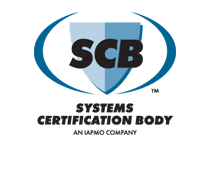Articles
RPA Releases Version 6.0 of Its Free Building Efficiency System Tool (BEST 6.0) Official Magazine
Net-Zero Planned Community Relies on Advanced Geothermal Infrastructure Contractor Magazine
New Geothermal GSHP Piping Systems Document Available Civil + Structural Engineer
Chicago's Willis Tower's $500 Million Upgrade Includes HVAC Work FacilitiesNet
Air-to-water heat pumps offer more than ductless Plumbing & Mechanical Magazine
Hydronic Heat Pumps - Riding the Tide of Electrification Plumbing & Mechanical Magazine
Opportunity Knock for Hydronics Heating Industry Plumbing & Mechanical Magazine
Drop the H Brewing Company Retrofit Magazine
Advanced Water Heating Initiative New Buildings Institute
Australia Training Facility Chooses Geothermal Contractor Magazine
Time to split? Moving away from specifying splits, VRFs and VRVs Airedale News
Heating System Key to Health Center Efficiency ASHRAE Journal
Avoid ASHRAE 15 Violations on VRF Projects Contracting Business Magazine
Decarbonization of Building Energy Systems High Performance Buildings Magazine
Shared Facility Helps Technology Grow ASHRAE Journal
To Employ or Not to Employ VRF? (Winter 2018 page 18) HVAC & Plumbing News Magazine
Active Chilled Beam - UMass Dedicates New Net-Zero Economics Department Building New Hampshire Gazette
Conversion to Active Chilled Beam at 250 S Wacker Project Description
Hydronic vs. VRF - Which, When and Why? Plumbing and Mechanical Magazine
Introducing BEST 2.0 - The Building Efficiency System Tool Construction Links Network
21 Tips from Top Experts for Executing Radiant Cooling Systems Building Design + Construction Magazine
10 reasons why boilers are still excellent heating systems Plumbing & Mechanical Magazine
Hydronics 101 ASHRAE Journal
Applying Refrigerant Codes HPAC Engineering
Hydronic systems offer better efficiency pme Magazine
Hydronics offers a cool, comfort advantage pme Magazine
BTUs in a Box - Radiant vs VRF Plumbing & Mechanical Magazine
District Ambient Temperature Loop Resources
Today’s Technology to Market (T2M) – the bidirectional thermal district Plumbing & Mechanical Magazine
District systems offer more cost-effective means of heating and cooling
District systems, which have been around for centuries, provide buildings with a product created with technology beyond what an individual can either afford or apply. The primary advantage is the delivery of more cost-effective heating or cooling to the building.
GeoMicroDistricts Retrofit Magazine
- Link to Feasibility Study created by Buro Happold for HEET, Cambridge, Mass (used with permission)
Drinking Water Energy: The Time is Now PHC News Magazine
This and other fluid exchange technologies provide real solutions that play a vital part in converting our building stock over to heat pumps.
When we are talking about water energy, there is another type of hydropower that has to do with using water movement to transfer energy in the form of BTUs. It is one of the most basic and simple uses of water in every form. It has been safely done for generations and is the most efficient form of heating and cooling energy transfer.
Existing water infrastructure may hold key to generating more hydropower
Millions of miles of pipelines and conduits across the United States make up an intricate network of waterways used for municipal, agricultural and industrial purposes.
In a new report, researchers at the U.S. Department of Energy’s Oak Ridge National Laboratory have found potential opportunities in all 50 states to efficiently utilize existing infrastructure to harvest this otherwise wasted energy.
Breaking Down Barriers Official Magazine
With the release of the 2021 UMC®, IAPMO became the first international code-development organization to provide regulatory guidelines in a mechanical code for installing geothermal energy systems used for HVAC and heating water.
These provisions break down barriers hindering the growth of these technologies. Local codes lack direction, with planners wanting to know things like “If it’s not in the code, what do we do?” or “Whose jurisdiction is this?”
By providing answers to questions like these, IAPMO is educating developers, assets
managers, designers, code officials and others about the benefits of geothermal energy and making it easier to consider them — which is less likely to happen if geothermal isn’t in the code.
Water-based HVAC Systems Are Naturally:
Hydronic systems use fluid or steam as the medium for the final heat-transfer

































